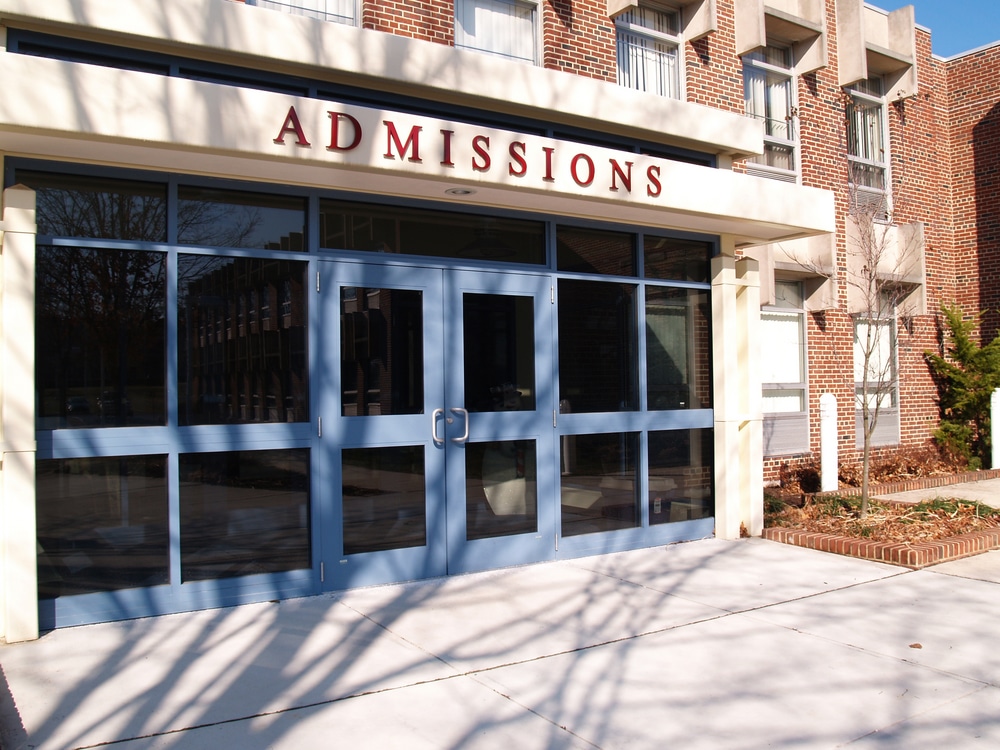The Change of College Acceptance Rates Over Time
The college admissions process is equal parts excitement, nerve-wracking, fascinating, confusing, and fun! It creates a complexity of emotions in applicants because of the momentous transition from high school to college it ushers in.
A major part of gaining a grip on this critical process is understanding some key facts and figures. Statistics are a fantastic way to gain a better understanding of this process, what makes it so unique, and what you can expect throughout it. One of the most fascinating college admissions stats is admissions rates.
More specifically, it’s fascinating to see how college acceptance rates over time have changed so greatly. Just 10 years ago, some schools were accepting double the amount of applicants they do today!
Of course, there are many factors that contribute to this growth. Namely, more people are applying to college yet these schools aren’t getting any bigger. This drives up the competition and forces applicants to work that much harder.
Here, we’re going to take a closer look at the changes in college acceptance rates over time in public colleges and specifically with regard to Ivy League schools. We’ll also take a look at some tips for improving your chances of getting into your dream school.
The Current State of College Acceptance Rates
In 2021, the college acceptance rates across the US dropped to a low of 3.4%. This marks another incredibly competitive year for high schoolers applying to colleges and universities throughout the country.
As mentioned before, the whole trend of college acceptance rates over time is a downward trajectory. This makes for a highly competitive college admissions process. Here is an exhaustive list of college acceptance rates over time.
College Acceptance Stats
| School | 2021 | 2020 | 2019 | 2018 | 2017 | 2007 |
| Amherst College | 13% | 11.8% | 10.8% | 12.8% | 13% | 17.5% |
| Babson College | 23.4% | TBA | 26% | 24% | 24% | N/A |
| Barnard College | 10.4% | 10.8% | 11.3% | 13.9% | 15.4% | 28% |
| Boston College | 18.9% | 23.8% | 27.1% | 27% | 32% | 27.3% |
| Boston University | 18.3% | 18.5% | 18% | 22% | 25% | 54% |
| Bowdoin College | 8.8% | 9.1% | 8.9% | 10.5% | 13.4% | 18.9% |
| Brown University | 5.4% | 6.8% | 6.6% | 7.2% | 8.3% | 14.9% |
| Bucknell University | TBA | TBA | 34.2% | 31% | 31% | 30% |
| California Institute of Technology | TBA | TBA | 6.4% | 8% | 8% | 16.8% |
| Carleton College | TBA | 20.1% | 18.9% | 19.4% | 20% | 29.8% |
| Carnegie Mellon University | TBA | TBA | 15.4% | 9.6% | 13% | 27.9% |
| Claremont McKenna College | 13% | 10% | 8.9% | 8.9% | 10.4% | N/A |
| Colby College | 8% | 9.4% | 9.63% | 13% | 15.8% | 31.8% |
| Colgate University | 17.2% | TBA | 22.3% | 25% | 28% | 25.6% |
| College of William and Mary | 42% | TBA | 38% | 36% | 35% | 33.6% |
| Columbia University | 3.66% | 6.1% | 5.1% | 5.5% | 5.8% | 12% |
| Cornell University | ~8.5% | 10.7% | 10.5% | 10.3% | 12.5% | 21.4% |
| Dartmouth College | 6.17% | 8.8% | 7.9% | 8.7% | 10.4% | 17.7% |
| Davidson College | 20.3% | 19% | 18.3% | 18.7% | 20% | N/A |
| Duke University | 7.4% | 7.7% | 7.4% | 8.3% | 9% | 21% |
| Emory University | 20.4% | 17.5% | 15.6% | 18.2% | 21.8% | N/A |
| George Washington University | TBA | 38.7% | 41% | 41.8% | 40.8% | 37% |
| Georgetown University | 12% | 15.5% | 14% | 14.5% | 15% | 20.8% |
| Georgia Institute of Technology | TBA | 20% | 18.8% | 22% | 23.2% | 63% |
| Hamilton College | 18% | TBA | 16.1% | 20.8% | 23.6% | 27.7% |
| Harvard University – Latest Admissions Statistics | 3.43% | 4.9% | 4.5% | 4.6% | 5.2% | 9.8% |
| Harvey Mudd College | 13.7% | TBA | 13.6% | 14.5% | 13.9% | N/A |
| Haverford College | 17.8% | TBA | 16.1% | 18.7% | 19.4% | 25% |
| Johns Hopkins University | TBA | 8.8% | 9.1% | 9.9% | 11.8% | 24% |
| Massachusetts Institute of Technology | 4% | 7.2% | 6.6% | 6.7% | 7.1% | 12.5% |
| Middlebury College | 15.7% | 24.3% | 15.9% | 18.4% | 19.7% | 13% |
| New York University | 12.8% | 15.3% | 16% | 19% | 28% | 36.7% |
| Northwestern University | 6.8% | 9% | 8.9% | 8.4% | 9% | 26.8% |
| Olin College of Engineering | TBA | TBA | 15.6% | 14.1% | 13.4% | N/A |
| Pomona College | TBA | 7.2% | 6.9% | 6.9% | 8.2% | 16.3% |
| Princeton University | 3.98% | 5.5% | 5.7% | 5.5% | 6.09% | 10% |
| Rice University | 9.3% | 10% | 8.7% | 11% | 16% | N/A |
| Stanford University | TBA | 5.2% | 4.3% | 4.3% | 4.65% | 10.3% |
| Swarthmore College | 8.9% | 8.8% | 8.7% | 9.1% | 10.2% | 24% |
| Trinity University | TBA | TBA | 29% | 33% | 32% | 51.5% |
| Tufts University | 11% | 15% | 14.6% | 14.6% | 14.8% | 27% |
| Tulane University | 9.73% | 11% | 13.1% | 17% | 21.5% | 44% |
| University of California – Berkeley | 16.8% | TBA | 16.8% | 15.2% | 18.3% | 23.3% |
| University of California – Los Angeles | 14% | TBA | 12% | 14.1% | 16.1% | 23.5% |
| University of Chicago | 6.2% | 6.2% | 5.9% | 7.2% | 8.7% | 34.9% |
| University of Michigan | TBA | TBA | 22.7% | 23.4% | 24% | 50.3% |
| University of North Carolina – Chapel Hill | 47% | TBA | 21.4% | 21.9% | 26.2% | 34.8% |
| University of Notre Dame | 14.6% | 16.5% | 15.3% | 17.6% | 18.4% | 24.4% |
| University of Pennsylvania | 5.68% | 8% | 7.4% | 8.4% | 9.1% | 20.5% |
| University of Richmond | TBA | TBA | 28.3% | 29.8% | 32.9% | 40% |
| University of Southern California | 12% | 15.8% | 11% | 12.8% | 16% | 25.3% |
| University of Virginia | 21% | 20.5% | 24.3% | 26.5% | 27% | 35.2% |
| Vanderbilt University | 6.7% | TBA | 7.8% | 9.2% | 10.3% | 32.8% |
| Vassar College | 19% | TBA | 23.4% | 24% | 22.8% | 28.6% |
| Wake Forest University | TBA | TBA | 29% | 27.5% | 27% | 42.4% |
| Washington and Lee University | TBA | TBA | 18% | 21.1% | 21.9% | 27.4% |
| Washington University in St. Louis | 13% | 16% | 14% | 15% | 16% | N/A |
| Wellesley College | 19.4% | 19% | 20% | 19% | 22% | 35.7% |
| Wesleyan University | 15.4% | 20% | 15.8% | 17.5% | 15.4% | 27.4% |
| Williams College | 8% | TBA | 12.4% | 12.2% | 14.6% | 17.4% |
| Yale University – Latest Admissions Statistics | 4.62% | 6.4% | 5.9% | 6.3% | 6.9% | 11.4% |
Ivy League Acceptance Rates Over Time
Now that you’ve seen the change of college acceptance rates over time e, let’s take a more specific look into the most prestigious group of colleges in the world: the Ivy League. For decades, these highly esteemed schools have been regarded as the best institutes of higher learning.
Naturally, these schools have always had lower acceptance rates when compared to other universities and colleges. Not only do they attract students from across the country and the entire world, but these schools are also smaller than many public schools. These factors combined contribute to highly selective admissions processes.
Here’s how the acceptance rate of Ivy League schools has changed over the past decade:
| 2021 | 2020 | 2019 | 2018 | 2017 | 2016 | 2015 | 2014 | 2013 | 2012 | |
| Brown | 5.4% | 6.9% | 6.6% | 7.2% | 8.3% | 9.0% | 8.6% | 8.6% | 9.2% | 9.6% |
| Columbia | 3.7% | 6.1% | 5.1% | 5.5% | 5.8% | 6.0% | 6.1% | 7.0% | 6.9% | 7.4% |
| Cornell | NYP | 10.7% | 10.6% | 10.3% | 12.5% | 14.1% | 14.9% | 14.0% | 15.2% | 16.2% |
| Dartmouth | 6.2% | 8.8% | 7.9% | 8.7% | 10.4% | 10.5% | 10.3% | 11.5% | 10.0% | 9.4% |
| Harvard | 3.4% | 4.9% | 4.5% | 4.6% | 5.2% | 5.2% | 5.3% | 5.9% | 5.8% | 5.9% |
| UPenn | 5.7% | 8.1% | 7.4% | 8.4% | 9.2% | 9.4% | 9.9% | 9.9% | 12.1% | 12.3% |
| Princeton | 4.0% | 5.6% | 5.8% | 5.5% | 6.1% | 6.5% | 7.0% | 7.3 % | 7.3 % | 7.9% |
| Yale | 4.6% | 6.5% | 5.9% | 6.3% | 6.9% | 6.3% | 6.5% | 6.3% | 6.7% | 6.8% |
Phew! The Ivy Leagues started out as competitive 10 years ago and have no signs of slowing down on their selectivity. But don’t worry! It’s still possible to get into these highly esteemed universities. It just takes a concerted effort, masterful organization, careful planning, and help from an experienced college admissions expert.
What you can (and can’t) learn from acceptance rates.
Acceptance rates are one of the most important statistics high schoolers consult when preparing to apply to college. Seeing the massive change of college acceptance rates over time is interesting, but it’s important to understand what acceptance rates can show you and what they can’t.
In equation form, acceptance rates are the number of admitted applicants divided by the total number of applicants. For example, if a school received 10,000 applications and only 1,000 were admitted, the acceptance rate would be 10%. Pretty simple, huh? Right!

But what do these percentages really say about a school? In the most literal sense, these numbers illustrate what percentage of applicants make it through to become part of the incoming class. People use this statistic to describe how difficult it is to get accepted into a particular school.
While that’s a perfectly reasonable use for these numbers, it’s important to keep in mind that these are averages. To continue our previous example, just because a school’s acceptance rate is 10%, that doesn’t mean each applicant has a 10% chance of getting accepted.
In reality, some students will have a higher chance of getting admitted while others will have a lower chance. Still, the odds of some students will hover right around the average. How is this possible? It’s because there are many factors that go into determining a student’s chances of getting accepted into a university or college, including
- High school GPA
- Standardized test scores
- Letters of recommendation
- College essays
- College interview
- Extracurricular activities
- And much, much more
Your strength on each of these factors will go towards determining your overall chances of getting accepted into your desired school.
If you’re wondering how that’s possible to even calculate, you’re on the right track. It’s nearly impossible to determine! And that’s why people use acceptance rates as a shortcut to gauge how difficult it is to get accepted into a particular school.
How to gauge your chances of getting accepted into your chosen school.
At AdmissionSight, we’re all about helping you master the college application process, and a big part of that is knowing what you’re up against. We’ve already established that acceptance rates are perfect for offering a rough idea of how hard it is to get into a school, but these numbers aren’t specific to you.
So, how can you get a better understanding of your chances of getting into the school of your choice? Well, it’s actually not that difficult!
All you have to do is take a look at the performance of accepted applicants on objective and measurable application requirements such as GPA and standardized tests.

Most colleges don’t release requirements or even suggestions for minimum numbers on these metrics. However, the average performance of admitted students is a great way to measure how you stack up. Luckily, this information is pretty easy to find online. Why only GPAs and SAT and ACT scores?
These factors are possible to compare between applicants because they’re standardized. Letters of recommendation, college essays, extracurriculars, and other immeasurable application requirements are much harder to compare. That’s why we advise students to focus on measurable factors to get a better idea of their chances of acceptance.
If you find yourself ranking right around the performance of accepted students on these metrics, your chances of getting accepted are pretty good.
If your numbers are a bit lower than those of admitted students, you’ll need to make up for it in other areas. For those students whose numbers are higher than the average, your odds of getting in are really good!
Master the College Admissions Process
Now that you’ve seen how college acceptance rates over time have changed, it’s clear schools are becoming more and more competitive over the years. Acceptance rates are nearly half what they were a decade ago at many schools.
The college admissions process is already a nerve-wracking and confusing process as it is. This selectivity just adds additional weight for high schoolers preparing to make this major transition.
No matter what school you’re aiming for, working with a college entrance expert is a great way to improve your chances of getting admitted. What’s that? Well, we’re happy you asked!

A college entrance expert is a professional who specializes in helping high schoolers just like you master the college admissions process. AdmissionSight – that’s us! – is a leading college admissions expert with over a decade of experience and an impressive track record of success.
We’ve spent the past 10 years gaining a comprehensive understanding of what colleges are looking for from applicants and what it takes for high schoolers to get accepted. With this knowledge, we created a highly specific set of services specifically designed to help students improve their college applications to increase their odds of getting accepted to their chosen school.
Sound like a good fit? We’d be honored to help you get on track to earn an acceptance letter from the school of your dreams. Feel free to contact us to set up a complimentary consultation.






































1 thought on “The Change of College Acceptance Rates Over Time”
Lol, what a racket. When I graduated from Penn’s law school nearly 50 years ago, the undergraduate colleges were notable as much for frats and football as academics, more like a Big Ten school or even the SEC than the Ivy League. So what happened? With the help of shrewd public relations, the Common Application and other “innovations,” Penn attracted tens of thousands of additional wannabes, and in a few decades it boasted acceptance rates comparable to Harvard’s or Yale’s. Same old Penn, just a new coat of lipstick.
Stressed out teenagers may be forgiven for feeling intimidated, but they shouldn’t fall for the admissions sleight of hand. The country hasn’t produced a bumper crop of geniuses for them to compete against. Just more and more kids with increasingly inflated grades and test scores. (or, lately, no submitted test scores at all) and a dubiously suited admissions office to which they must pitch their spiel.
And, don’t get me wrong, the same goes for Penn’s vainglorious rivals.